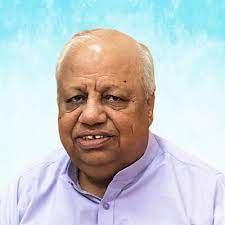The Need for Integrative Thinking in Medicine
 By Dr. Arun Kumar Agarwal
By Dr. Arun Kumar Agarwal
As medical science is advancing rapidly, the need for integrative thinking is being increasingly felt among healthcare practitioners. This approach merges the precision of allopathic medicine—rooted in evidence-based, disease-targeted treatments—with the holistic wisdom of traditional systems like Ayurveda, alongside other alternative therapies such as Siddha, Unani, Homeopathy, and Naturopathy. As a Medical Advisor at Apollo Hospitals Group, I have witnessed the growing demand for personalised, whole-person care, rooted in the strengths of conventional medicine and the rich legacies of India’s diverse healing traditions. Let’s examine why integrative thinking is vital, drawing from clinical evidence, global initiatives, and the broader context of holistic healthcare, to craft a future where medicine nurtures body, mind, and spirit.
The Foundations of Allopathic and Alternative Medicine Systems
Allopathic medicine, derived from the Greek terms “allo” (other or different) and “pathy” (suffering or disease), emerged as a broad system of scientific medicine formalised in the late 18th and early 19th centuries. It excels in diagnosing and treating acute conditions through surgery, pharmaceuticals, and advanced diagnostics, evolving through contributions from various practitioners over time. The term “allopathy” was coined by Samuel Hahnemann (1755–1843), a German physician, to describe the conventional medical practices of his era, which he critiqued for their symptom-focused approaches like bloodletting and purging.
Pertinently, India’s traditional systems offer a tapestry of holistic approaches. Ayurveda, the “science of life” or “science of longevity,” traces its origins to 2500–500 BC, with mythological roots linked to Lord Brahma. The Charaka Samhita and Sushruta Samhita, attributed to physician Charaka and surgeon Sushruta, balance the three doshas—Vata, Pitta, and Kapha—using diet, herbs, and lifestyle. A significant portion of India’s population actively uses Ayurveda, often alongside allopathy, with its products reaching 77 per cent of households according to recent surveys. In Nepal, traditional medicine, including Ayurveda, plays a notable role due to cultural ties with India.

Siddha, prevalent in South India and Sri Lanka, is based on the five elements (earth, water, fire, air, ether) and uses herbal, mineral, and metallic preparations. Unani, influenced by Greek and Islamic medicine, emphasises the four humours (blood, phlegm, yellow bile, black bile) and employs herbal remedies, diet, and regimental therapy. Homeopathy, developed by Hahnemann, operates on the principle of “like cures like,” using highly diluted substances to stimulate self-healing. Naturopathy, a drugless system, focuses on natural therapies like fasting, hydrotherapy, and yoga to enhance the body’s innate healing capacity. Together, these systems, documented in ancient texts like the Vedas, address physical, mental, and spiritual well-being.
The Case for Integration
Allopathy’s strength in acute care is offset by its focus on symptom management and potential side effects, while alternative systems, though rich in tradition, often lack rigorous scientific validation. Integrative thinking harmonises these strengths, offering preventive and personalised care. Globally, the Cleveland Clinic’s Center for Functional Medicine reports improved patient outcomes, weight loss, fewer specialist visits, and cost savings through integrative methods. Shared Medical Appointments (SMAs) enhance these benefits, while integrative oncology, incorporating therapies like Ayurveda and Naturopathy, improves quality of life (QoL) during cancer treatment. This synergy addresses chronic diseases—where allopathy struggles—and leverages the preventive focus of alternative systems.
Evidence from Clinical Trials
Research highlights the potential of these systems. A 2013 trial with 440 knee osteoarthritis patients found that two Ayurvedic herbal formulations matched the efficacy of glucosamine sulphate and celecoxib in reducing pain and improving function. A 2011 pilot— funded by the National Center for Complementary and Integrative Health (NCCIH), located in Bethesda, Maryland, USA, within the campus of the National Institutes of Health (NIH)—with 43 rheumatoid arthritis patients showed that an Ayurvedic 40-herb regimen equalled methotrexate’s effectiveness. For type 2 diabetes, a 2011 trial with 89 participants in India suggested a five-herb Ayurvedic formulation may help, though design flaws limit conclusions.

Siddha’s use of Siddha Marundhu for arthritis and Unani’s Majoon for digestive health show promise in small studies, though larger trials are needed. Homeopathy’s effectiveness in treating allergies was supported by a 2012 meta-analysis of 29 studies, showing moderate benefits. Naturopathy’s hydrotherapy and fasting protocols reduced blood pressure in a 2015 study of 60 hypertensives. Turmeric, used across Ayurveda and Siddha, aided ulcerative colitis in 2005 and 2006 trials (10 and 89 participants, respectively), while Butea monosperma (Flame of the Forest, a vibrant, flowering tree native to India, known for its striking red-orange blooms) extracts from Ayurveda are being studied for osteoarthritis protection.
Philosophical Alignment: Nature’s Warning and Holistic Balance
Alternative systems echo a philosophy akin to Mahatma Gandhi’s belief that illness serves as nature’s signal, urging us to cleanse the body of accumulated impurities through natural means. This aligns with integrative medicine’s focus on detoxification and lifestyle. Ayurveda balances doshas, Siddha aligns elements, Unani harmonises humours, Homeopathy triggers self-healing, and Naturopathy enhances vitality through nature. These systems recognise the seven tissues (Sapta Dhatus in Ayurveda) and waste products (Tri Malas), emphasising personalized care based on individual constitutions.
Allopathy’s acute-care focus often overlooks these holistic aspects. Integrative thinking incorporates diet, exercise, yoga, and mental well-being—principles backed by research linking nutrition to chronic disease prevention. As modern diets create nutrient gaps, these systems’ emphasis on whole-person health gains traction, empowering patients to manage wellness amid rising healthcare costs and lifestyle changes.
Expanding the Context of Holistic Healthcare
Holistic healthcare transcends symptom treatment, addressing emotional, social, and environmental factors. Integrative thinking fosters this by integrating mindfulness from Naturopathy, stress-relief techniques from Unani, and community-based healing from Siddha traditions. Yoga, a shared practice, reduces anxiety and improves cardiovascular health, as shown in a 2018 study of 120 participants. Meditation, rooted in Ayurvedic and Unani practices, lowers cortisol levels, enhancing immunity.

Environmental harmony, a cornerstone of these systems, aligns with the One Health approach, linking human, animal, and planetary health. For instance, Unani’s herbal gardens and Ayurveda’s sustainable plant use mirror ecological stewardship. This is critical as urbanisation and pollution exacerbate chronic conditions, necessitating a broader health paradigm. Integrative care also supports mental health, with Homeopathy’s individualised remedies showing promise for depression in a 2017 pilot study of 50 patients.
Challenges and Opportunities
Integrating these systems faces obstacles. Allopathy’s evidence-based model contrasts with the anecdotal basis of alternative therapies, requiring robust trials. Variability in preparation quality—e.g., herbal sourcing in Siddha or dilution in Homeopathy—poses consistency challenges. Cultural biases and limited allopathic training in these methods hinder adoption.
Opportunities are vast. India’s National Institutes of Health (NIH) and ClinicalTrials.gov provid
e platforms for research, while Apollo Hospitals pilots programs blending Naturopathy’s fasting with allopathic diabetes management, reporting improved adherence. Global models like the Cleveland Clinic inspire multidisciplinary teams. Rising patient demand for affordable, personalised care, coupled with digital health tools tracking holistic outcomes, drives innovation. The One Health framework offers a sustainable model, integrating environmental therapies from all systems.
Building a Future of Integrative Medicine
This shift demands a cultural transformation. Medical curricula should include alternative systems, training practitioners in diagnostics and holistic care. Public awareness, using local languages and community leaders, can dispel myths—e.g., Naturopathy’s safety or Homeopathy’s efficacy. Policy support, like standardised guidelines for herbal products, ensures safety without stifling tradition.

At Apollo, we are exploring Unani’s regimental therapy for stress alongside allopathic treatments, with early feedback indicating better QoL. Globally, integrative centres like the Mayo Clinic integrate acupuncture with conventional care, offering a blueprint. Community health programs, blending Siddha’s tribal knowledge with modern outreach, can address rural disparities.
Takeaways
The need for integrative thinking in medicine is a call to unite science and tradition, embracing the whole person. Ayurveda, Siddha, Unani, Homeopathy, and Naturopathy, with their 5,000-year legacy, complement allopathy’s modern tools to tackle contemporary health challenges. As healthcare evolves, this approach promises not just longevity but holistic well-being. Patients are encouraged to engage with these systems under professional guidance, embracing a balanced path to health that honours nature, culture, and science.
(The author is Medical Advisor, Innovation and Clinical Research, Apollo Group of Hospitals, New Delhi)

